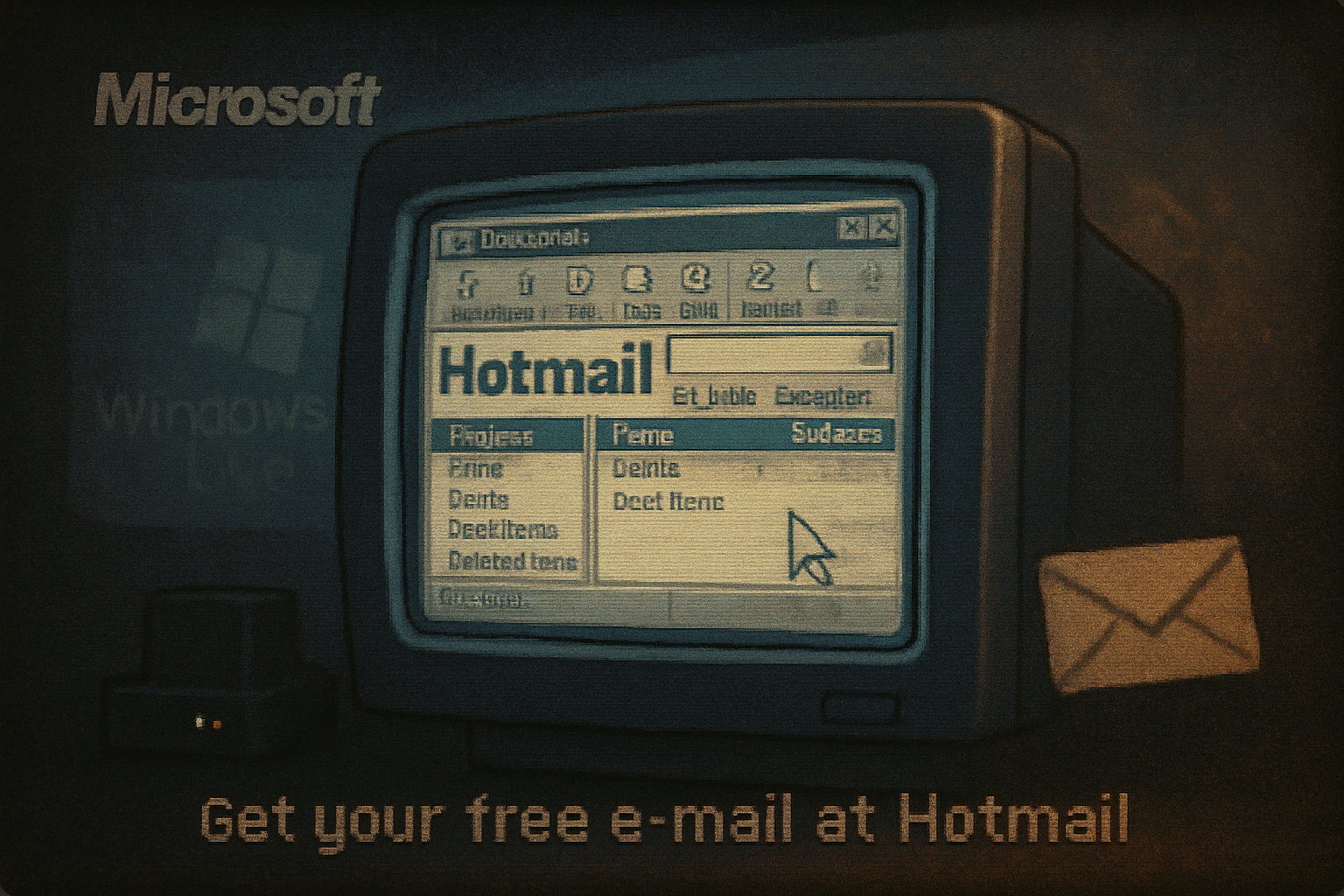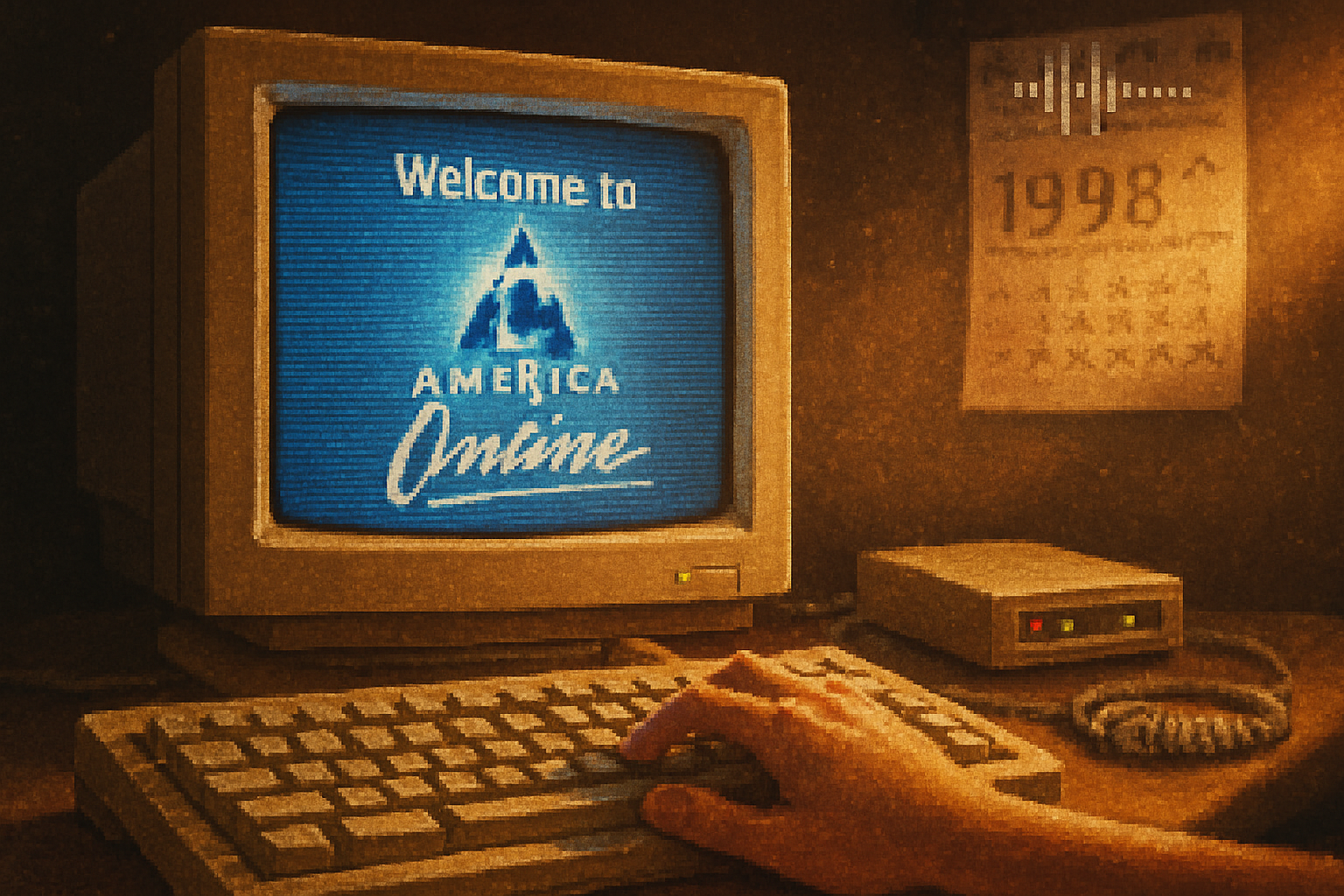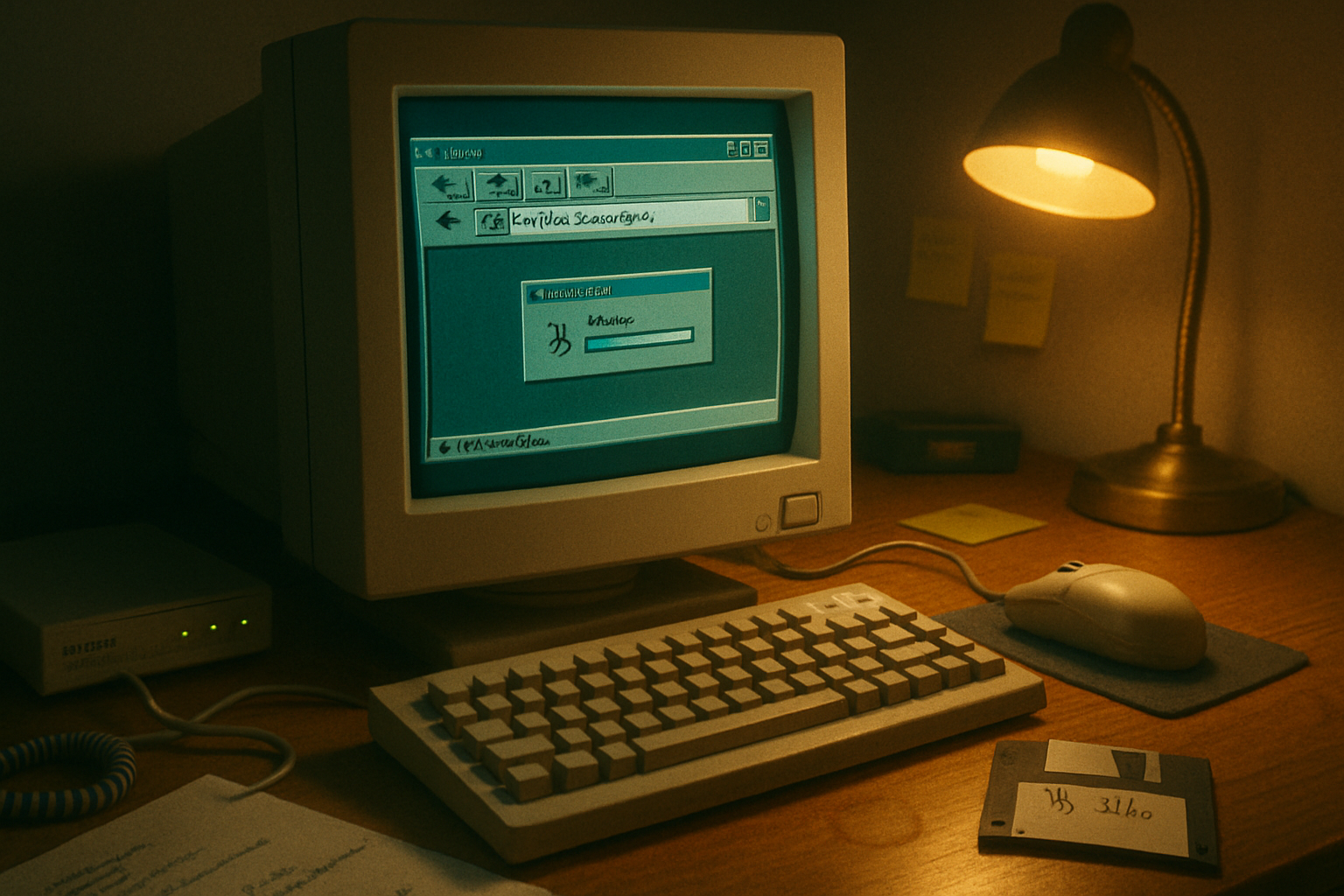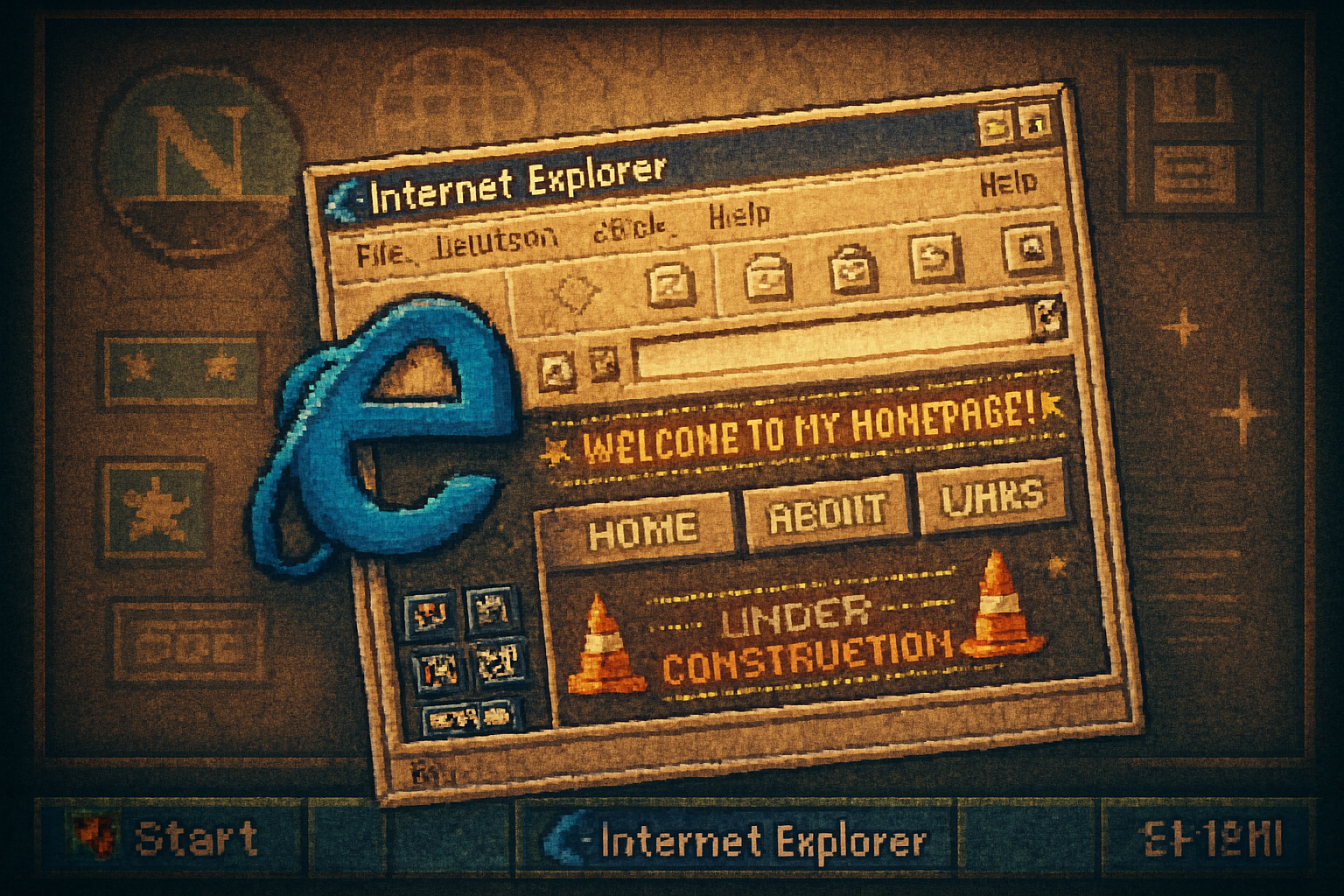· retrotech · 5 min read
The Rise and Fall of Hotmail: A Nostalgic Journey Through Email History
Hotmail arrived like a tiny revolution - free, web-based email you could access anywhere. It grew fast, got bought by Microsoft, then stumbled as the web matured. This piece traces Hotmail's climb, its complacent plateau, and the lessons the tech world still ignores.

I remember the first time I saw it: an email with a little signature that read “Get your free e-mail at Hotmail” - like a digital business card that doubled as a sales banner. It felt like being handed a key to the fledgling internet: suddenly your mailbox lived somewhere beyond your ISP, beyond your desktop, somewhere public and portable. It was tiny permission, but it changed everything.
A small launch with fireworks: origins and early momentum
Hotmail was founded in 1996 by Sabeer Bhatia and Jack Smith and famously launched on July 4th - a deliberate, cheeky flourish of symbolism meant to underline a new kind of independence: leaving ISP-bound email behind and accessing your messages from any browser 1(https://en.wikipedia.org/wiki/Hotmail). The service was free, ad-supported, and dangerously simple. You registered, you got mail on the web, you told your friends.
A few structural advantages pushed Hotmail into the public eye:
- It answered a real pain - email tied to a single machine or ISP. Webmail decoupled the address from hardware and location.
- It used the virus-growing power of social sharing - the automatic signature footer on outbound messages acted as a built-in referral program.
- It arrived early, during the net’s first big consumer wave, when a well-timed product could reach millions before competitors even began to imagine the space.
Microsoft bought Hotmail in late 1997 for roughly $400 million in stock, a splashy exit that signaled how valuable webmail had suddenly become 2(https://news.microsoft.com/1997/12/12/microsoft-to-acquire-hotmail/). What followed was two decades of being huge, then being outpaced.
The golden years: ubiquity, identity, and the idea of free email
Through the late 1990s and early 2000s Hotmail was practically synonymous with email for many people. Its advantages were cultural as much as technical:
- Free accounts lowered the barrier to entry; email addresses became identity handles for the web.
- The Hotmail footer served as viral marketing; you were literally advertising the product with every message.
- Brands and people used Hotmail addresses as a public-facing contact - sometimes to comedic effect.
Hotmail’s ubiquity taught the internet two lessons: first, that email could be an onramp to other online services; second, that expectations about storage, accessibility, and reliability would keep rising.
Complacency, technical debt, and the slow slide
Big products often die not from a single catastrophic decision but from a thousand small failures to adapt. Hotmail illustrates this elegantly.
Microsoft owned the user base and the brand, but growth didn’t immunize the product from engineering debt and bad incentives:
- The early architecture was not built for the modern web. Scaling and updating a legacy webmail codebase is painfully hard.
- Spam and security became bigger problems as email use exploded. Users wanted better filtering and faster performance.
- Competitors began to prioritize speed, searchability, and storage in ways Hotmail did not match quickly enough.
The internet’s taste for speed and responsiveness shifted with technologies like AJAX and richer client experiences. Improvements that felt incremental to engineers were tectonic to users. Meanwhile, product teams focused on corporate strategy and integration rather than user-facing velocity.
The tipping point: Gmail and the expectations reset
In 2004 Google launched Gmail. It was an ugly-sweet shock: 1GB of storage at launch, excellent search, and a radically different interface and conversation model that reframed what an email product could be 3(https://en.wikipedia.org/wiki/Gmail). Gmail’s arrival reset expectations - suddenly, email wasn’t just a place to get messages, it was an application with speed, context, and intelligent filtering.
This is where Hotmail’s problems were exposed in plain daylight:
- Users could feel the difference between a modern interface and a legacy experience.
- Storage became a battleground; the days of penny-pinching on mailboxes were over.
- Spam filtering and intelligent organization became central to the value proposition.
Hotmail had the user base, but it lacked the product pace and the clean architectural slate competitors were shipping on.
Reinventing and rebranding: MSN Hotmail to Windows Live to Outlook
Microsoft tried to respond. Hotmail became MSN Hotmail, then Windows Live Hotmail, a brand that attempted to reposition the product inside Microsoft’s ecosystem. There were incremental improvements, and some solid engineering behind the scenes, but the change felt iterative.
By 2012 Microsoft acknowledged the need for a fresh start and launched Outlook.com as a modern reimagining of its webmail experience, with a new backend and a cleaner interface - and began migrating Hotmail users to the new system 4(https://blogs.microsoft.com/blog/2012/07/31/introducing-outlook-com/). The name Hotmail was gradually retired, but not before the migration process prompted nostalgia, grumbles, and a rude reminder that moving millions of captive users is hard and politically fraught.
What Hotmail gave us (and what it teaches)
Hotmail’s legacy is not a tale of failure so much as a parable about product life cycles in software. Concrete legacies:
- Webmail as a given - Hotmail helped make the idea of web-based, free email culturally inevitable.
- Email as identity - People started using email addresses as usernames, identifiers, and recovery mechanisms - foundations of modern account systems.
- Viral marketing classics - The footer-referral is a growth-hack that product managers still admire and imitate.
And practical lessons for builders and managers:
- Early lead is not destiny. Owning users doesn’t substitute for continual product reinvention.
- Architectural debt compounds. Quick hacks to ship can slow you for years.
- User expectations escalate. Storage, speed, security, and privacy become table stakes very fast.
- Brand longevity depends on execution, not nostalgia. Names matter, but code matters more.
A final, slightly cruel thought about nostalgia
We like to mythologize early internet brands. Hotmail is affectionate shorthand for a half-remembered era of floppy disks, dial-up tones, and euphoric first webs. But nostalgia risks flattening the lesson: Hotmail was brilliant, necessary, and imperfect. It won by inventing a problem-free solution at the right time, and it lost ground by moving too slowly when the world changed. That’s less tragic than instructive.
If the tech world were a patient, Hotmail would be the case study in how a life-saving medicine can become toxic if dosage and delivery aren’t updated. Its story reminds founders and product teams of one simple truth: being useful once doesn’t guarantee survival the next time utility is redefined.
Footnotes
Hotmail - https://en.wikipedia.org/wiki/Hotmail ↩
Microsoft press release - https://news.microsoft.com/1997/12/12/microsoft-to-acquire-hotmail/ ↩
Gmail - https://en.wikipedia.org/wiki/Gmail ↩
Introducing Outlook.com - https://blogs.microsoft.com/blog/2012/07/31/introducing-outlook-com/ ↩



